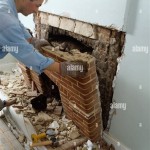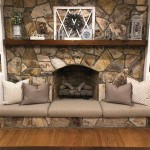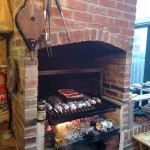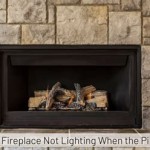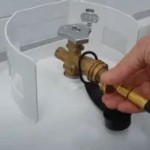How Much Does It Cost to Install a Fireplace Mantel?
A fireplace mantel serves as both a decorative focal point and a functional shelf above a fireplace. The cost to install a fireplace mantel can vary significantly, depending on several factors including the type of mantel, the materials used, the complexity of the installation, and the geographic location. Understanding these cost drivers is crucial for budgeting and planning a fireplace mantel installation project.
Estimating the expense of a fireplace mantel installation requires careful consideration of all associated costs. This includes the price of the mantel itself, any necessary demolition or preparation work, the labor costs for installation, and any potential additional expenses such as permits or structural modifications. A thorough assessment ensures a realistic budget and avoids unexpected financial burdens.
Key Cost Factors in Fireplace Mantel Installation
The overall cost to install a fireplace mantel is influenced by a combination of material costs, labor rates, and the specific challenges presented by the installation site. Breaking down these key elements provides a clearer picture of the anticipated expenses.
Material Costs: The mantel itself represents a significant portion of the overall cost. Mantels are available in a wide range of materials, each with its own price point. Common materials include wood, stone, brick, and cast stone. The choice of material heavily impacts the project's total cost. For instance, a simple wooden mantel is generally more affordable than a custom-carved stone mantel.
Labor Costs: Labor rates can vary widely based on the installer's experience and the complexity of the installation. A straightforward installation involving a pre-fabricated mantel will likely cost less than a custom installation that requires significant modifications to the existing fireplace surround or wall. Factors such as travel time and the installer's overhead also contribute to the overall labor cost.
Demolition and Preparation: Existing mantels may need to be removed before installing a new one. This demolition work can add to the overall cost, particularly if the existing mantel is difficult to remove or if any structural damage is uncovered during the removal process. Preparation of the wall or fireplace surround is also necessary to ensure a secure and level mounting surface for the new mantel. This could include repairing drywall, patching holes, or reinforcing the wall structure.
Material Options and Their Associated Costs
The choice of mantel material is a significant determinant of the overall installation cost. Each material offers unique aesthetic qualities and varying levels of durability and maintenance requirements.
Wood Mantels: Wood is a popular choice for fireplace mantels due to its versatility, affordability, and aesthetic appeal. Softwoods like pine are generally less expensive than hardwoods like oak or maple. The cost of a wood mantel also depends on the level of detail and craftsmanship involved. A simple, unadorned wooden mantel can cost anywhere from $100 to $500, while a custom-carved hardwood mantel can easily exceed $1000. Installation costs for wood mantels are typically lower than those for stone or brick mantels because wood is easier to work with and requires less specialized tools.
Stone Mantels: Stone mantels offer a timeless and elegant look. They are available in a variety of stone types, including limestone, granite, marble, and slate. The price of a stone mantel varies significantly depending on the type of stone and the size and complexity of the design. Limestone is a relatively affordable option, while marble and granite are more expensive. A pre-fabricated stone mantel can cost between $500 and $2000, while a custom-carved stone mantel can cost upwards of $5000 or more. Installation of stone mantels typically requires specialized tools and expertise, resulting in higher labor costs.
Brick Mantels: Brick mantels offer a rustic and traditional look. They can be constructed using new or reclaimed bricks, and the cost depends on the type and quality of the bricks used, as well as the complexity of the design. A simple brick mantel can cost between $300 and $1000, while a more elaborate brick mantel with arches or other architectural details can cost upwards of $2000. Installation of brick mantels requires masonry skills and can be labor-intensive, particularly if the existing fireplace surround needs to be modified.
Cast Stone Mantels: Cast stone mantels are made from a mixture of cement and aggregates, and they are designed to mimic the look of natural stone at a lower cost. They are available in a variety of styles and finishes, and they can be custom-made to match specific design requirements. A cast stone mantel can cost between $400 and $1500, depending on the size and complexity of the design. Installation costs for cast stone mantels are typically lower than those for natural stone mantels, as cast stone is lighter and easier to work with.
Additional Cost Considerations for Fireplace Mantel Installation
Beyond the material and labor costs, several other factors can influence the overall cost of a fireplace mantel installation project. These include the need for permits, potential structural modifications, and finishing work.
Permits: Depending on the location and the scope of the project, a building permit may be required for fireplace mantel installation. The cost of a building permit can vary depending on the municipality, but it typically ranges from $50 to $200. It is crucial to check with the local building department to determine whether a permit is required and to obtain the necessary approvals before starting the installation.
Structural Modifications: In some cases, structural modifications to the wall or fireplace surround may be necessary to accommodate the new mantel. This could involve reinforcing the wall to support the weight of the mantel or modifying the fireplace opening to ensure proper clearance. Structural modifications can add significantly to the overall cost of the project, as they often require the services of a structural engineer and a skilled contractor.
Finishing Work: After the mantel is installed, finishing work may be necessary to complete the project. This could include painting or staining the mantel, sealing the joints between the mantel and the wall, or installing decorative trim. Finishing work can add to the overall cost of the project, but it is essential for achieving a polished and professional look.
Fireproofing and Clearance: Ensuring adequate clearance between the mantel and the firebox is crucial for safety. Building codes typically specify minimum clearance requirements for combustible materials near a fireplace. If the existing fireplace does not meet these clearance requirements, modifications may be necessary to ensure compliance. Adding fireproof materials like tile or non-combustible drywall behind the mantel can increase safety and meet code requirements.
Existing Fireplace Condition: The condition of the existing fireplace and its surround can significantly impact the installation costs. If the fireplace surround is damaged or in need of repair, additional work will be required to prepare the surface for the new mantel. This could involve repairing cracks, patching holes, or replacing damaged tiles. The cost of these repairs can add to the overall project budget.
Customization and Design: A custom-designed mantel tailored to specific aesthetic preferences will generally cost more than a pre-fabricated mantel. Custom designs require more labor and may involve unique materials or intricate detailing. The more complex the design, the higher the cost is likely to be.
Geographic Location: Labor rates and material costs can vary significantly depending on the geographic location. Metropolitan areas typically have higher labor rates than rural areas. Material costs can also be affected by transportation costs and local market conditions. Obtaining multiple quotes from contractors in the area can help to determine a fair price for the installation.
DIY vs. Professional Installation: While it may be tempting to install a fireplace mantel as a do-it-yourself project, professional installation is often recommended, especially for heavier mantels or complex installations. Professional installers have the experience and expertise to ensure that the mantel is installed safely and securely, and they can also handle any unforeseen issues that may arise during the installation process. Incorrect installation can lead to safety hazards and costly repairs down the line.
In summary, the cost to install a fireplace mantel is a multifaceted calculation involving materials, labor, preparation, and a host of other potential factors. A clear understanding of these elements will aid in informed decision-making and budgeting for this home improvement project.

Fireplace Mantels Installation Care Redwood Burl Inc

Fireplace Mantels Installation Care Redwood Burl Inc

Fireplace Mantels Installation Care Redwood Burl Inc

Fireplace Mantels Installation Care Redwood Burl Inc

Fireplace Mantel Installation Before And After

How To Build Install A Fireplace Mantel We Love Fire

How To Install A Floating Mantle The Easy Way In Just One Afternoon

How Much Does A Fireplace Remodel Cost 2024 Data Angi

How To Install A Floating Mantle The Easy Way In Just One Afternoon

How To Build A Fireplace Mantel In Only 5 Steps


